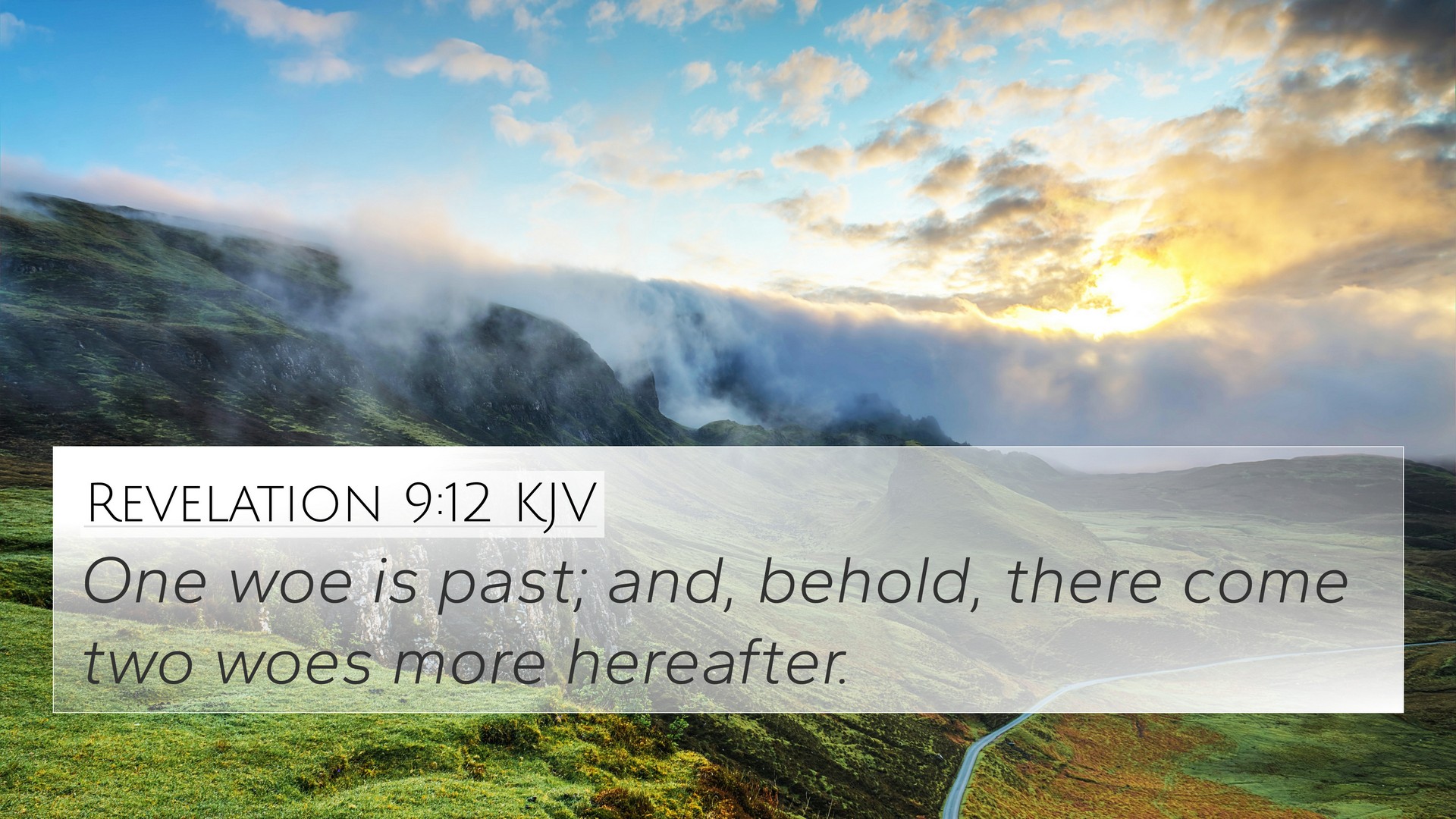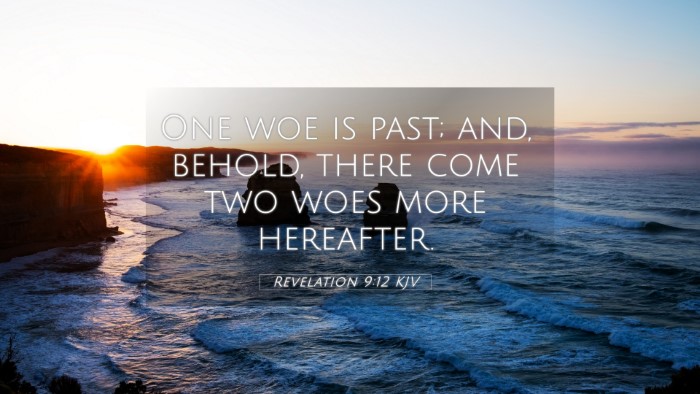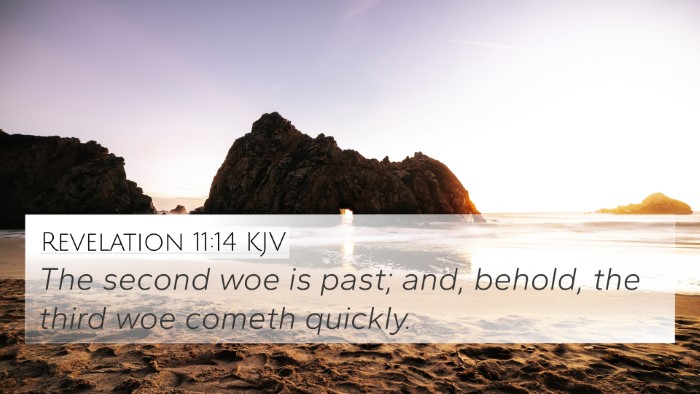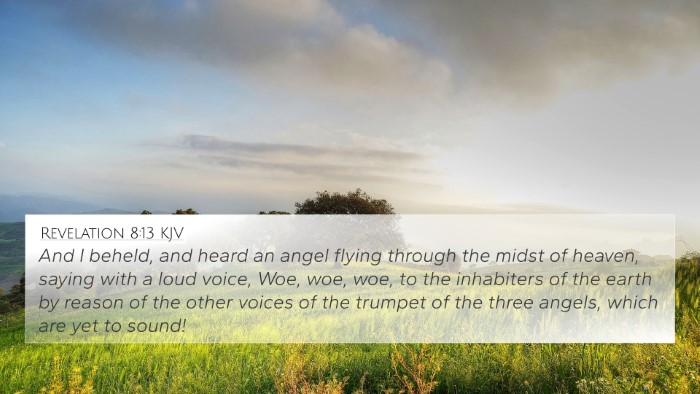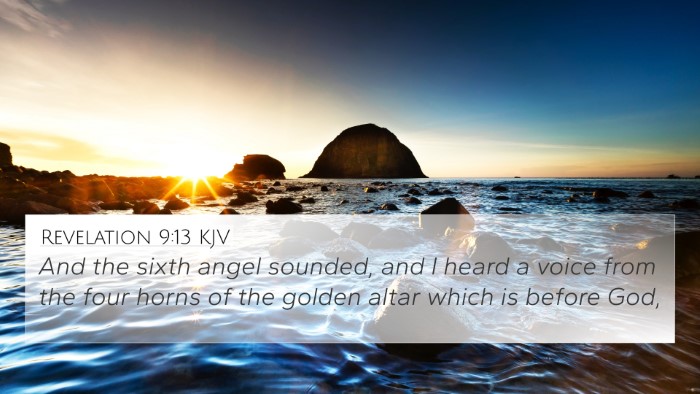Understanding Revelation 9:12
Revelation 9:12 states, "One woe is past; and, behold, there come two woes more hereafter." This verse appears in a dramatic context within the Book of Revelation, a text rich with symbolism and prophetic imagery. In this verse, we encounter a transition in the narrative, indicating a shift from one series of catastrophic judgments to another. To comprehend this fully, we can gather insights from various public domain commentaries, including those by Matthew Henry, Albert Barnes, and Adam Clarke.
Insights from Commentaries
- Matthew Henry: Henry emphasizes the tragic series of judgments being revealed through the trumpets. He believes that the term "woe" indicates a heightened severity of the coming judgments, as the previous woe has already had devastating effects. The phrase highlights the necessity for readers to prepare for the still greater judgments to follow.
- Albert Barnes: Barnes elaborates on the importance of the woes in Revelation. He interprets the first woe as a significant warning to humanity and assumes that the coming woes will similarly indicate dire consequences for those who are unrepentant. He stresses that the woes signify divine displeasure and serve as calls to repentance.
- Adam Clarke: Clarke’s exposition connects the woes to the spiritual turmoil and chaos that reigns in the world during the end times. Clarke views the woes not just as physical calamities but as manifestations of spiritual warfare, where the consequences of sin lead to profound suffering. He warns the reader to seek safety through faith in Christ amid such tribulations.
Thematic Connections and Cross-References
This verse connects with a broader biblical context, particularly concerning the themes of judgment, prophecy, and divine wrath. Here are some relevant Bible verse cross-references that link thematically and contextually to Revelation 9:12:
- Matthew 24:21-22 - This passage describes a time of great tribulation, paralleling the woes described in Revelation.
- 1 Thessalonians 5:3 - Paul warns about peace and sudden destruction, echoing the imminent disasters of the woes.
- Joel 2:1-2 - The prophetic warnings in Joel concerning the day of the Lord resonate with the impending woes.
- Revelation 8:13 - This verse introduces the woes and speaks of the trumpet warnings preceding the judgments.
- Luke 21:25-26 - Jesus warns of signs in the heavens and earth, connecting to the apocalyptic imagery found in Revelation.
- Jeremiah 30:7 - Known as the "time of Jacob's trouble," it parallels the intensity of the forthcoming woes.
- Revelation 6:17 - The great day of God’s wrath comes, foreshadowing the severity of the woes described later in Revelation.
Comparative Bible Verse Analysis
When examining Revelation 9:12 alongside other prophetic texts, one can identify several connections between Bible verses that enhance our understanding:
- The woes in Revelation echo earlier prophecies in the Old Testament, particularly concerning Israel's disobedience and the consequent divine judgment.
- An analysis of the Gospels reveals that Jesus’ teachings about the end times provide a backdrop to the horrors described in Revelation.
- The cumulative effect of the woes serves as a reminder of God's justice, a theme prevalent from the Old Testament to the New Testament.
Inter-Biblical Dialogue and Thematic Connections
Revelation 9:12 is not isolated; it encourages an inter-Biblical dialogue between the prophetic texts. The themes of judgment and woe are again and again traced through Scripture:
- Noah's warning in Genesis serves as a precursor to the judgments faced during the later Biblical events.
- The cries of the prophets throughout the Old Testament resonate with the tone of woe found in Revelation.
- Hebrews 10:31 warns that it is a fearful thing to fall into the hands of the living God, resonating with the themes in Revelation.
Conclusion
In conclusion, Revelation 9:12 signifies a critical point in the apocalyptic narrative where awareness of divine judgment is heightened. The thematic links to other scriptures enrich our understanding of its significance, reminding us of the seriousness of spiritual unpreparedness and the call to faith. The bible cross-reference system serves as an invaluable tool for exploring these connections, offering a profound perspective on the intertwined narrative of scripture.
